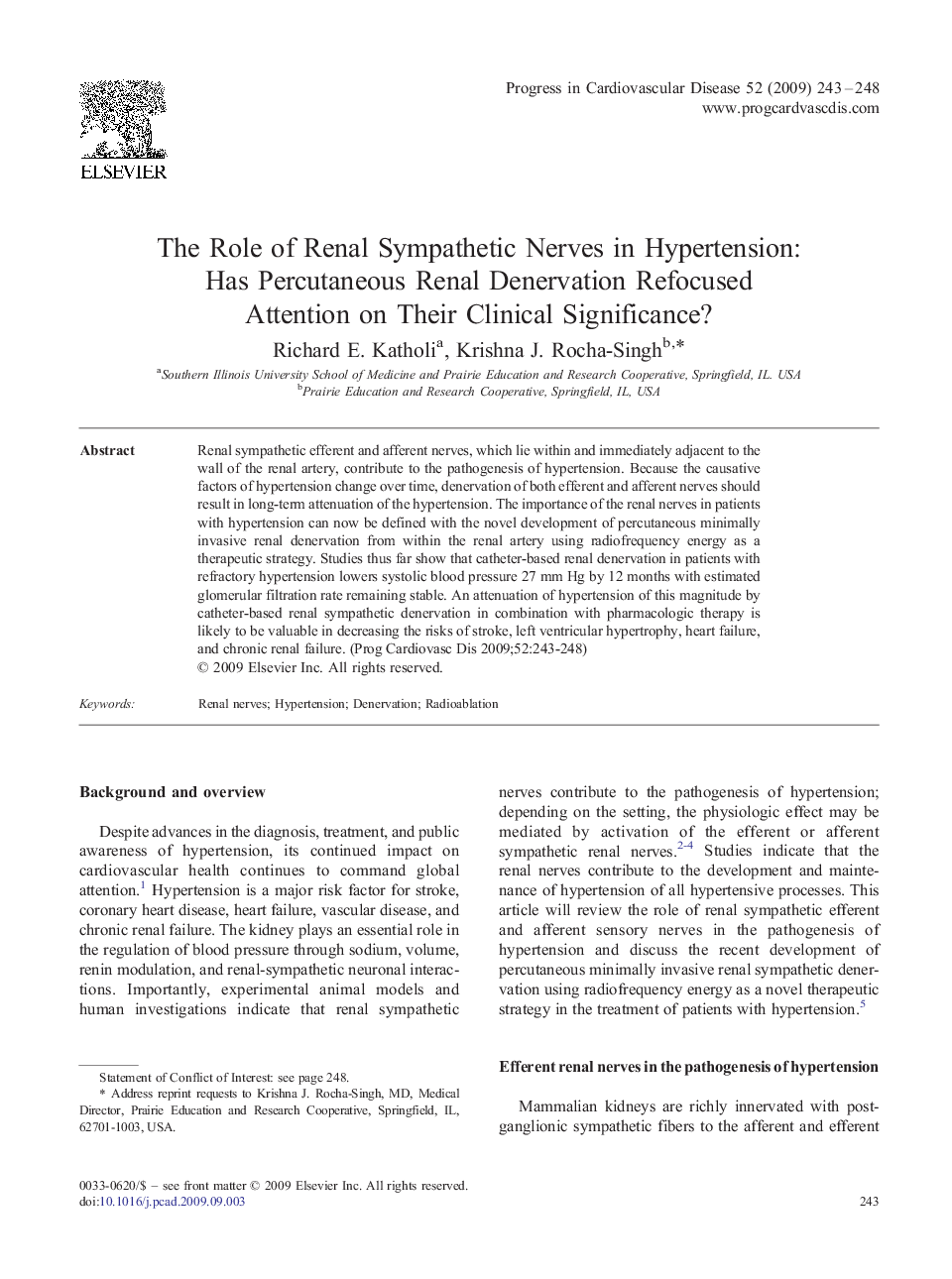| Article ID | Journal | Published Year | Pages | File Type |
|---|---|---|---|---|
| 3006808 | Progress in Cardiovascular Diseases | 2009 | 6 Pages |
Renal sympathetic efferent and afferent nerves, which lie within and immediately adjacent to the wall of the renal artery, contribute to the pathogenesis of hypertension. Because the causative factors of hypertension change over time, denervation of both efferent and afferent nerves should result in long-term attenuation of the hypertension. The importance of the renal nerves in patients with hypertension can now be defined with the novel development of percutaneous minimally invasive renal denervation from within the renal artery using radiofrequency energy as a therapeutic strategy. Studies thus far show that catheter-based renal denervation in patients with refractory hypertension lowers systolic blood pressure 27 mm Hg by 12 months with estimated glomerular filtration rate remaining stable. An attenuation of hypertension of this magnitude by catheter-based renal sympathetic denervation in combination with pharmacologic therapy is likely to be valuable in decreasing the risks of stroke, left ventricular hypertrophy, heart failure, and chronic renal failure.
